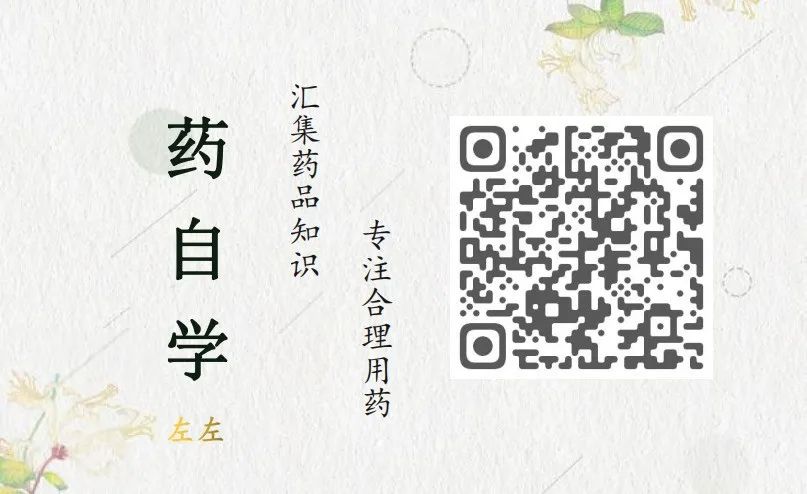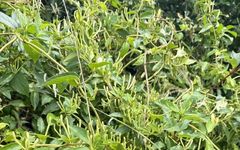 Honeysuckle (Jin Yin Hua) is a well-known traditional Chinese medicine (TCM) herb, commonly found in many formulas and often used as a tea. During my visit back home in May, I discovered a patch of honeysuckle on the hillside, feeling as if I had found a treasure. However, most of the flowers I saw were still in bud, so I only picked a few and returned a few days later, worried that someone else might harvest them.
Honeysuckle (Jin Yin Hua) is a well-known traditional Chinese medicine (TCM) herb, commonly found in many formulas and often used as a tea. During my visit back home in May, I discovered a patch of honeysuckle on the hillside, feeling as if I had found a treasure. However, most of the flowers I saw were still in bud, so I only picked a few and returned a few days later, worried that someone else might harvest them.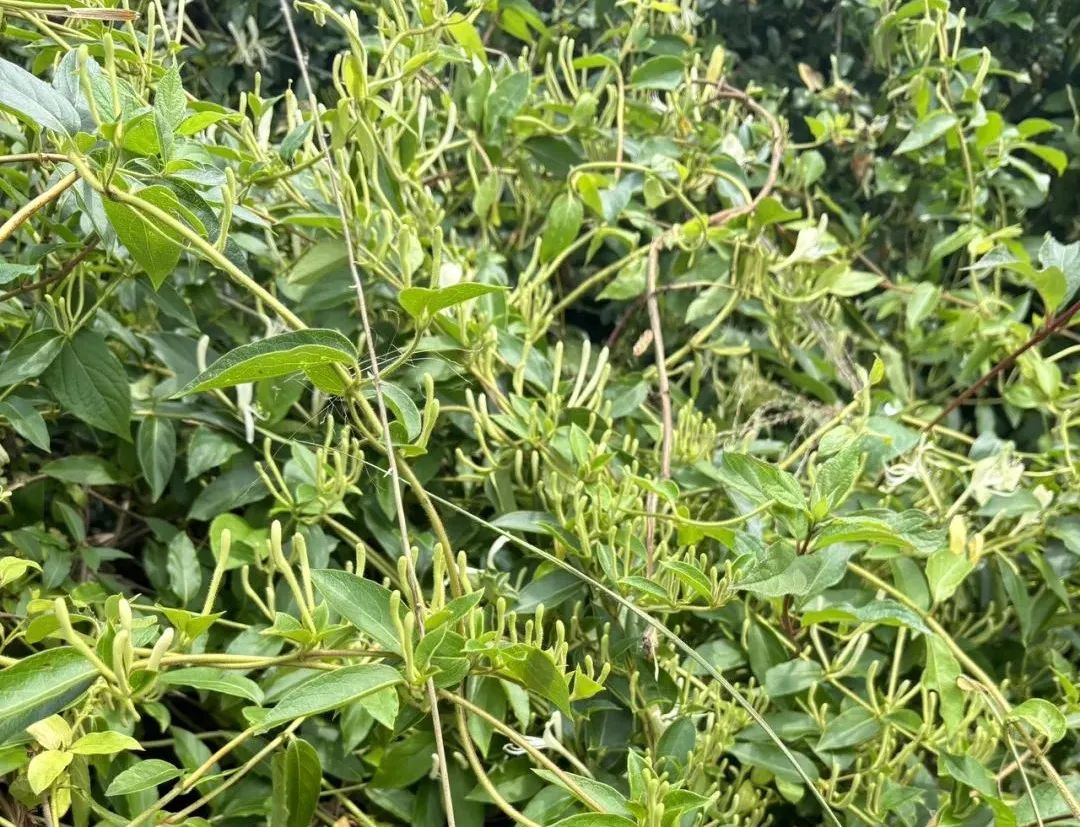 Honeysuckle grows in shrublands, rocky areas, and along mountain paths. For medicinal use, the dried flower buds or just-opened flowers are preferred. So why is it called honeysuckle? Because when honeysuckle first blooms, it is white, and after a day or two, it turns yellow, resembling gold and silver, hence the name.
Honeysuckle grows in shrublands, rocky areas, and along mountain paths. For medicinal use, the dried flower buds or just-opened flowers are preferred. So why is it called honeysuckle? Because when honeysuckle first blooms, it is white, and after a day or two, it turns yellow, resembling gold and silver, hence the name.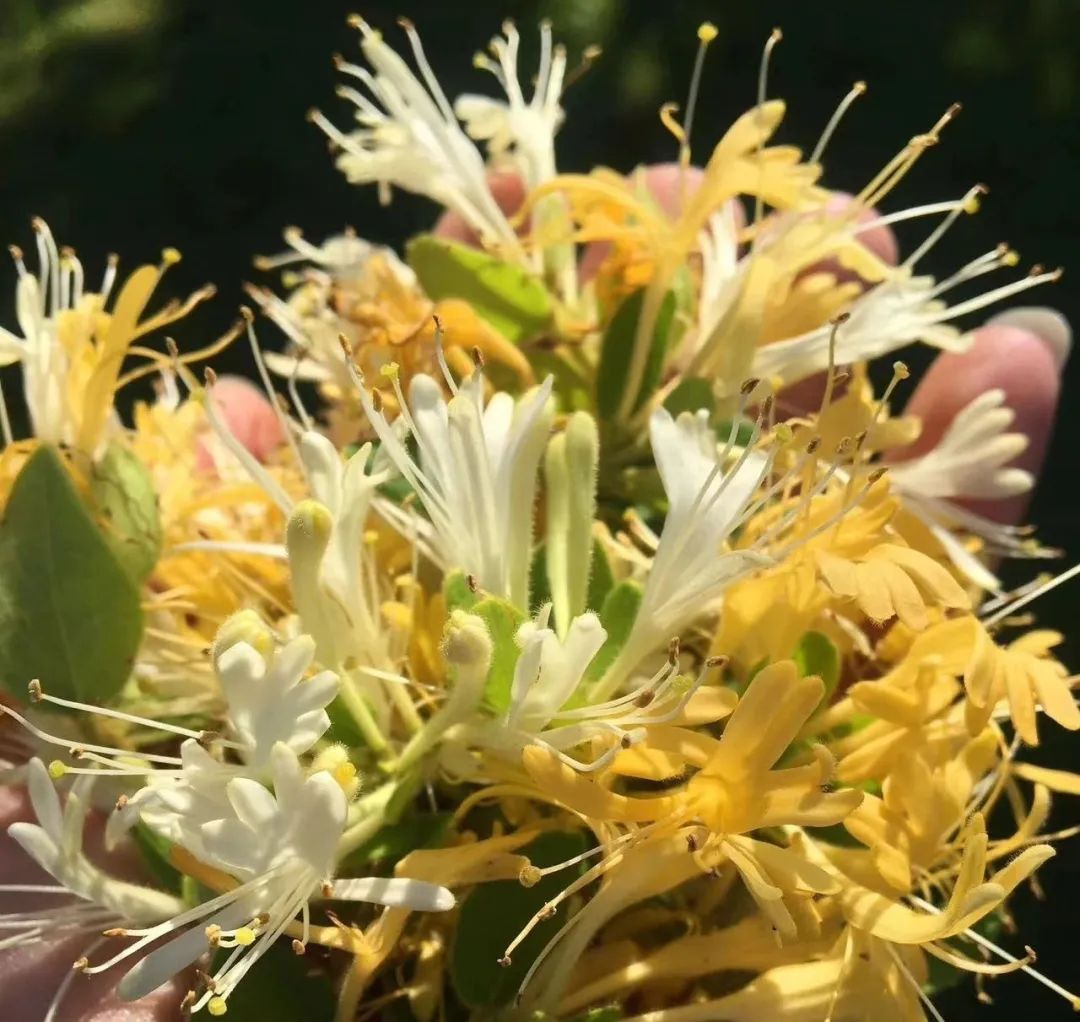 Honeysuckle has a sweet taste and a cold nature, and it enters the Lung (Fei), Heart (Xin), and Stomach (Wei) meridians. It is known for its ability to clear heat and detoxify, as well as disperse wind-heat. The primary function of honeysuckle is to clear heat and detoxify. But what does “toxicity” mean in TCM? It encompasses damp toxicity, heat toxicity, fire toxicity, etc. TCM detoxification does not equate to killing bacteria as in Western medicine; rather, it suppresses toxins and harmonizes the body’s yin and yang, cold and heat. From a Western medical perspective, honeysuckle exhibits broad-spectrum antibacterial properties (against bacteria and viruses), particularly showing strong inhibition against Staphylococcus aureus and Shigella.
Honeysuckle has a sweet taste and a cold nature, and it enters the Lung (Fei), Heart (Xin), and Stomach (Wei) meridians. It is known for its ability to clear heat and detoxify, as well as disperse wind-heat. The primary function of honeysuckle is to clear heat and detoxify. But what does “toxicity” mean in TCM? It encompasses damp toxicity, heat toxicity, fire toxicity, etc. TCM detoxification does not equate to killing bacteria as in Western medicine; rather, it suppresses toxins and harmonizes the body’s yin and yang, cold and heat. From a Western medical perspective, honeysuckle exhibits broad-spectrum antibacterial properties (against bacteria and viruses), particularly showing strong inhibition against Staphylococcus aureus and Shigella.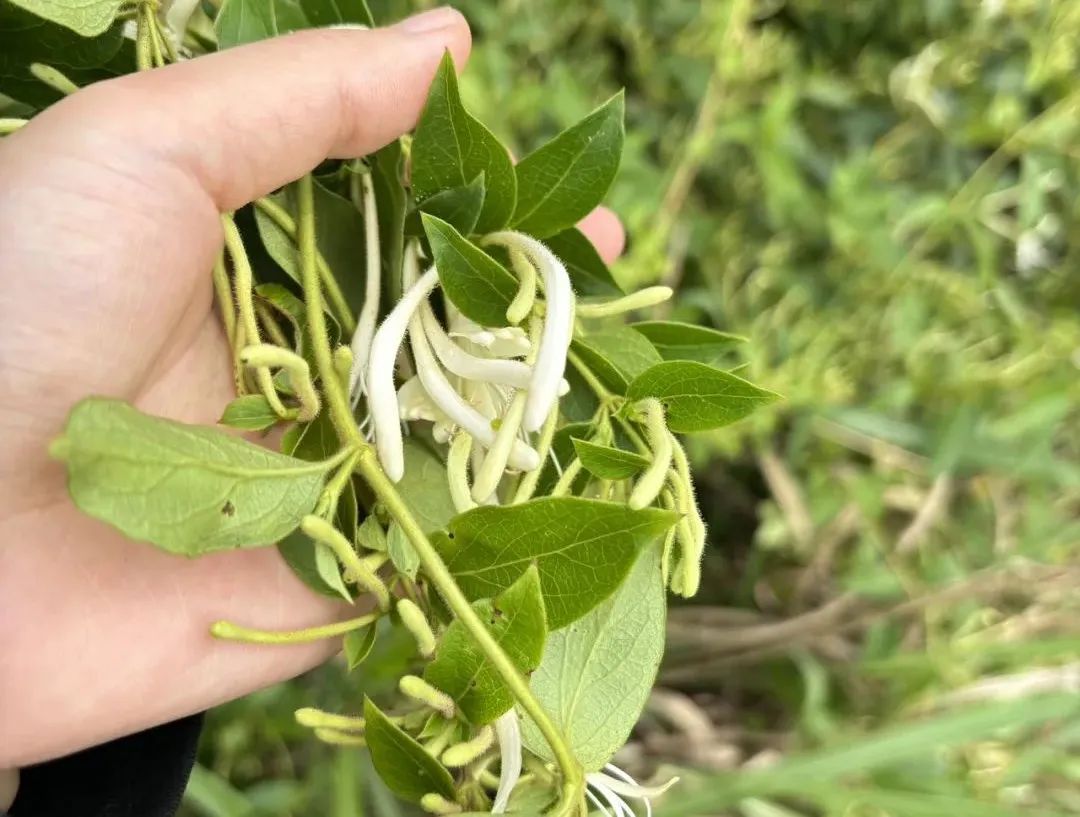 Honeysuckle is also referred to as a Chinese herbal antibiotic. What is its use? If you catch a wind-heat cold with symptoms like fever and sore throat, brewing honeysuckle in water is very effective. For those with excessive internal heat (such as those with a balanced constitution or damp-heat constitution) or bad breath, honeysuckle can be boiled with licorice (Gan Cao) for a soothing drink. If you have a tendency to develop heat-related conditions or blood heat, leading to spots or acne, you can consume honeysuckle decoction or use it in soup with raw rehmannia (Sheng Di) to clear heat, detoxify, and cool the blood. To relieve summer heat and treat prickly heat, those prone to heatstroke can drink honeysuckle boiled with mint (Bo He) and reed root (Lu Gen). For children who easily develop prickly heat in summer, bathing in honeysuckle-infused water (diluted) is very effective.
Honeysuckle is also referred to as a Chinese herbal antibiotic. What is its use? If you catch a wind-heat cold with symptoms like fever and sore throat, brewing honeysuckle in water is very effective. For those with excessive internal heat (such as those with a balanced constitution or damp-heat constitution) or bad breath, honeysuckle can be boiled with licorice (Gan Cao) for a soothing drink. If you have a tendency to develop heat-related conditions or blood heat, leading to spots or acne, you can consume honeysuckle decoction or use it in soup with raw rehmannia (Sheng Di) to clear heat, detoxify, and cool the blood. To relieve summer heat and treat prickly heat, those prone to heatstroke can drink honeysuckle boiled with mint (Bo He) and reed root (Lu Gen). For children who easily develop prickly heat in summer, bathing in honeysuckle-infused water (diluted) is very effective.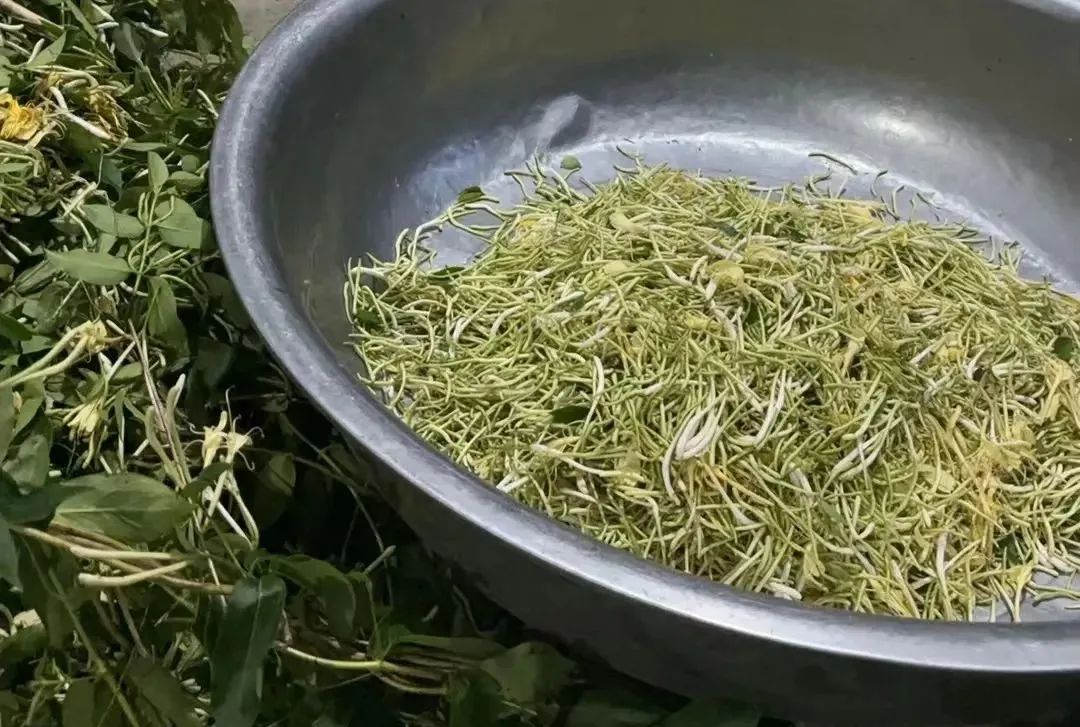 How should honeysuckle be consumed? The typical dosage is 5-15 grams, which can be steeped in boiling water for about 15 minutes before drinking. It is best not to consume it cold or as leftovers. Honeysuckle’s sweet and cold properties can clear stomach heat, but conversely, excessive consumption can harm the stomach, as cold-natured herbs can deplete the stomach’s yang energy. So, can those with a cold constitution or stomach cold use honeysuckle? There are two methods: one is to combine it with warming herbs like licorice or ginger (Sheng Jiang) to balance its cold nature; the other is to lightly stir-fry it to reduce its coldness. Combining honeysuckle with licorice has two benefits: it mitigates honeysuckle’s cold nature and enhances its heat-clearing and detoxifying effects. Who should avoid it? Women during menstruation should refrain; pregnant and breastfeeding women should use it cautiously; and no one should consume it for extended periods.
How should honeysuckle be consumed? The typical dosage is 5-15 grams, which can be steeped in boiling water for about 15 minutes before drinking. It is best not to consume it cold or as leftovers. Honeysuckle’s sweet and cold properties can clear stomach heat, but conversely, excessive consumption can harm the stomach, as cold-natured herbs can deplete the stomach’s yang energy. So, can those with a cold constitution or stomach cold use honeysuckle? There are two methods: one is to combine it with warming herbs like licorice or ginger (Sheng Jiang) to balance its cold nature; the other is to lightly stir-fry it to reduce its coldness. Combining honeysuckle with licorice has two benefits: it mitigates honeysuckle’s cold nature and enhances its heat-clearing and detoxifying effects. Who should avoid it? Women during menstruation should refrain; pregnant and breastfeeding women should use it cautiously; and no one should consume it for extended periods.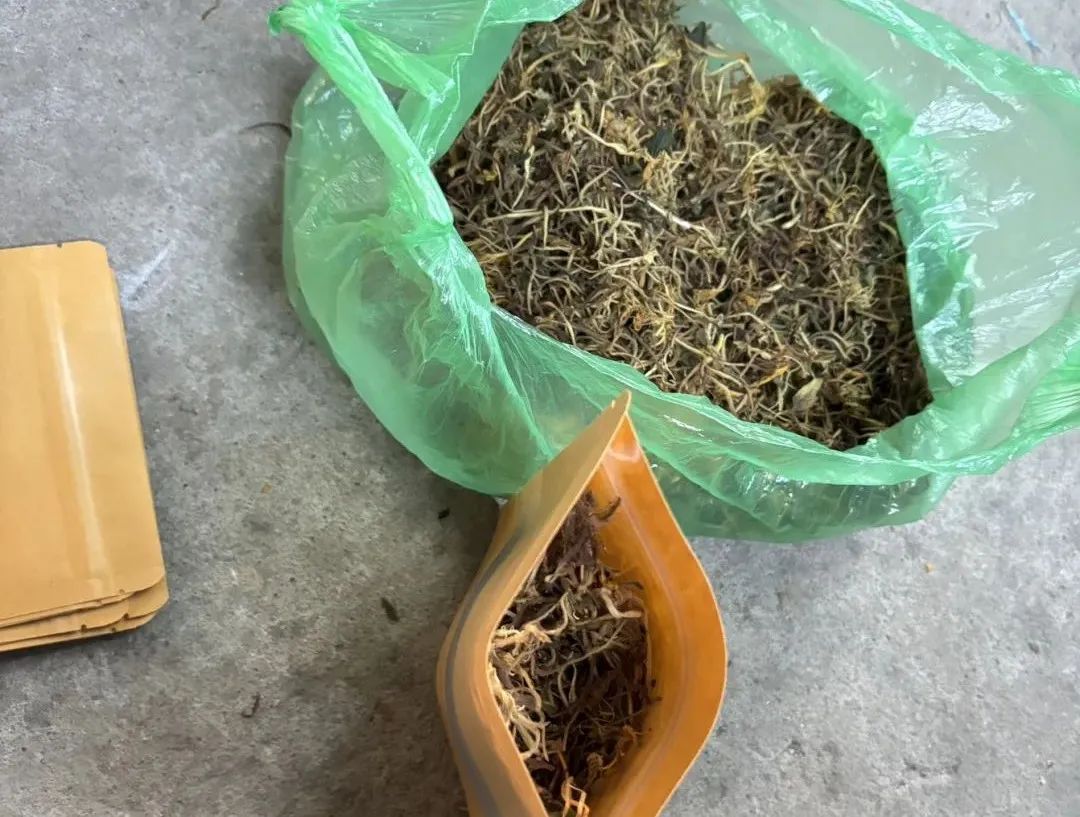 This time, it was not easy to wait for the honeysuckle to bloom, as my wife had been guarding it for several days, risking encounters with snakes. The honeysuckle we harvested looked dark, and many might think it should be a brighter green. In fact, honeysuckle can be processed in various ways: it can be air-dried, directly dried, steamed and dried, or stir-fried. Visually, honeysuckle processed by air-drying, direct drying, or stir-frying will gradually turn yellow or black, losing its green color. Steamed honeysuckle retains a better appearance, but air-dried honeysuckle has the fragrance closest to fresh honeysuckle, while stir-fried honeysuckle has the least cold nature.
This time, it was not easy to wait for the honeysuckle to bloom, as my wife had been guarding it for several days, risking encounters with snakes. The honeysuckle we harvested looked dark, and many might think it should be a brighter green. In fact, honeysuckle can be processed in various ways: it can be air-dried, directly dried, steamed and dried, or stir-fried. Visually, honeysuckle processed by air-drying, direct drying, or stir-frying will gradually turn yellow or black, losing its green color. Steamed honeysuckle retains a better appearance, but air-dried honeysuckle has the fragrance closest to fresh honeysuckle, while stir-fried honeysuckle has the least cold nature.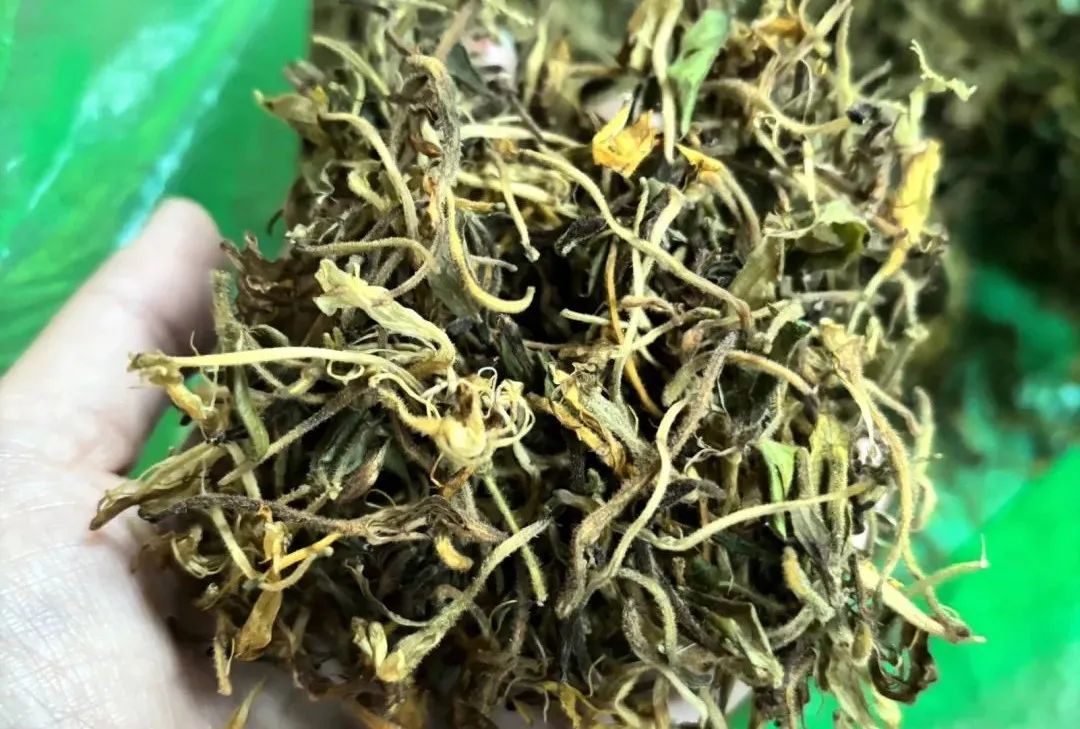 The honeysuckle in the picture was harvested with leaves and flowers (buds). First, the buds or flowers are picked, then steamed for two minutes, and after steaming, they are dried to achieve this appearance. As for why it looks a bit yellow and black, the yellow parts are mostly flowers, while the black is due to turning during the drying process. This honeysuckle is purely wild, with more buds than flowers, fine hairs, and is harvested naturally with traditional processing, even though its color may not be appealing, it retains its original flavor.This honeysuckle brews a strong aroma, with a bitter taste followed by a slight sweetness.Why is it bitter? Most of the harvested parts are flower buds, and being wild, the bitterness is relatively pronounced.
The honeysuckle in the picture was harvested with leaves and flowers (buds). First, the buds or flowers are picked, then steamed for two minutes, and after steaming, they are dried to achieve this appearance. As for why it looks a bit yellow and black, the yellow parts are mostly flowers, while the black is due to turning during the drying process. This honeysuckle is purely wild, with more buds than flowers, fine hairs, and is harvested naturally with traditional processing, even though its color may not be appealing, it retains its original flavor.This honeysuckle brews a strong aroma, with a bitter taste followed by a slight sweetness.Why is it bitter? Most of the harvested parts are flower buds, and being wild, the bitterness is relatively pronounced.

A commonly used Chinese patent medicine, yet it is a good remedy for both yin and yang.
What to do if you have a sore throat but are afraid that heat-clearing and detoxifying medicines will harm your stomach?
The Chinese and Western medicines and formulas mentioned in this article should be used under the guidance of professionals.
TCM enthusiasts can join the “Reader Group” on the public account homepage for interaction and discussion.
